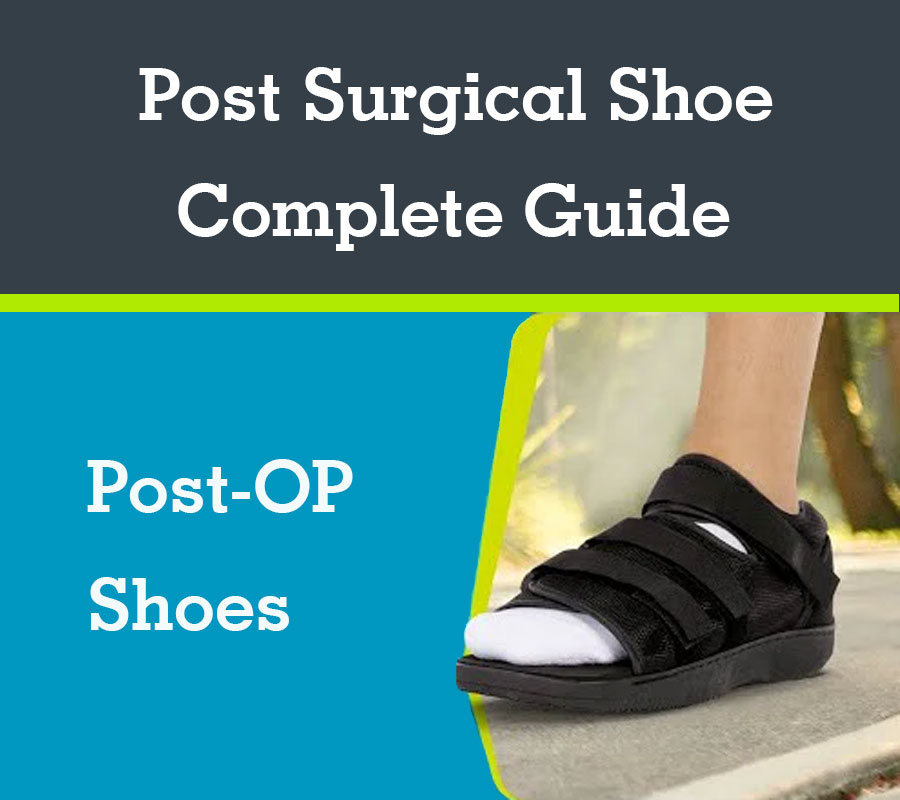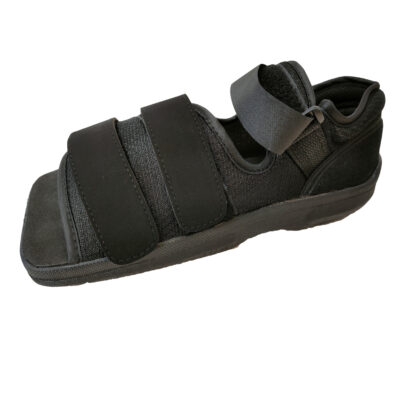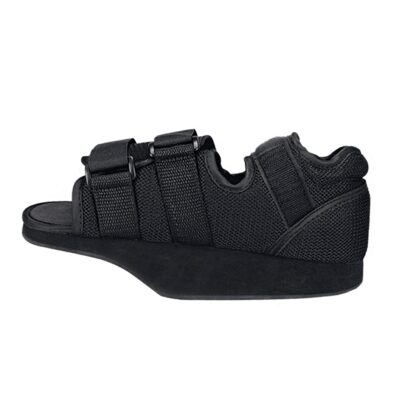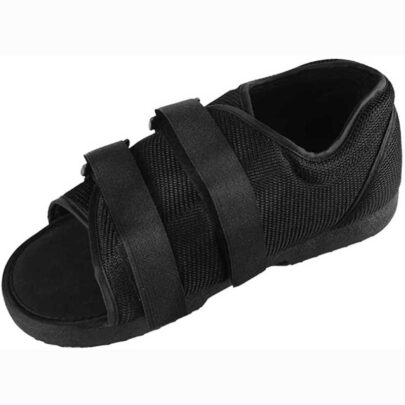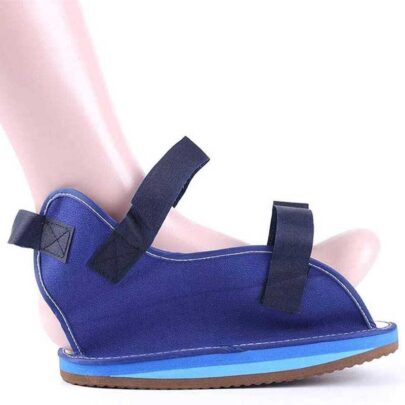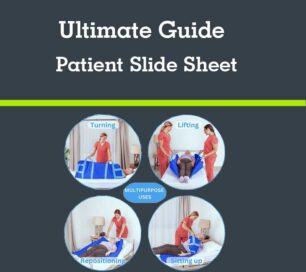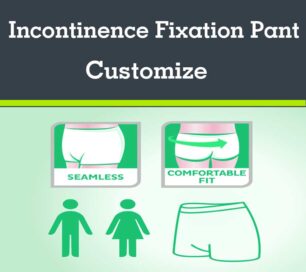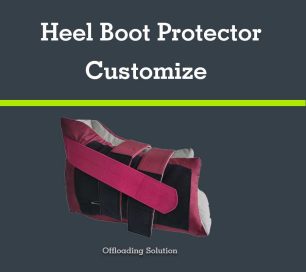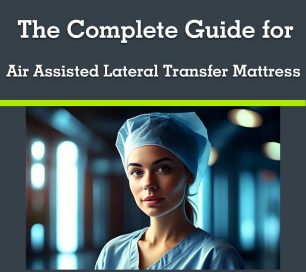Last Updated on 2 months ago by admin
Post-Op Shoes: The Essential B2B Solution for Enhanced Surgical Recovery
In the healthcare industry, patient recovery is a top priority, and the right equipment can make all the difference. Post-op shoes, also known as surgical or medical walking shoes, are specialized footwear designed to support patients recovering from foot or ankle surgeries. These products are critical for hospitals, clinics, and rehabilitation centers aiming to enhance patient outcomes while reducing recovery complications. This article explores the benefits, applications, and key considerations for sourcing post-op shoes in the B2B medical equipment market, helping procurement managers and distributors make informed decisions.
Metacare is one of the leading providers of post-op, trauma, and wound care solutions for feet and ankles.
For B2B buyers, selecting post-op shoes that meet ISO 13485 or FDA standards ensures compliance with medical regulations, guaranteeing safety and reliability for end-users.
What is a Post Op Shoe?
Foot surgery is always severe because there are very few exercises that directly strengthen the feet. Hence post-surgery doctors oblige the patients to avoid walking so that the foot can get completely healed so that it can carry the weight of the body or undergo rehab as and when necessary.
Once the patient is allowed to walk or undergoes a rehab program a Post-operative shoe is recommended by the doctors to facilitate the healing process and at the same time support and protect the foot during exercises and walking.
Once the foot starts recovering there are lots of bandages and tapes on the injured foot all the time, hence the post-op shoe should be large enough to fit the patient’s foot along with the bandages.
The shoes are specially made to open up easily and fit the foot in along with the bandages. The shoe acts as a “bumper” for the foot. The shoe has a very rigid sole in order to prevent the surgical site from moving and flexing as it can lead to further damage like trauma or can lead to excessive swelling.
The Post Op Shoe is taller than our normal shoes, hence it’s advised to wear a shoe that has the same height as the Post Op shoe. If you wear a normal shoe, then it incites imbalance in your body which can lead to lower back pain.
The use of ankle blocks and modern (stable) surgical approaches has revolutionised the post-operative
care in most forefoot surgery. This combination makes immediate weight bearing and day-case foot
surgery safe and indeed ideal. It improves the patient’s independence, gives the patient control, reduces
the chance of infection with antibiotic resistant microbes and reduces complications by encouraging early
mobilisation.
The patient is usually able to walk out of the hospital. Early discharge from hospital is the aim as
this is when the ankle block is fully effective allowing the patient to return home safely and pain
free.
Global Post-surgery Recovery Shoes Market 2025 by Manufacturers, Regions, Type and Application, Forecast to 2031
The global post-operative shoe market is poised for significant expansion, projected to reach an estimated market size of $1,500 million by 2025. This growth is fueled by an increasing incidence of foot and ankle surgeries, driven by factors such as an aging population, rising prevalence of chronic conditions like diabetes and arthritis, and a growing number of sports-related injuries. The market is characterized by a Compound Annual Growth Rate (CAGR) of approximately 6.5% from 2025 to 2033, indicating sustained demand and innovation. Key drivers include the rising healthcare expenditure globally, advancements in orthopedic surgical techniques, and a greater emphasis on patient rehabilitation and recovery. Post-operative shoes play a crucial role in protecting surgical sites, reducing pressure on the foot, and promoting faster healing, thereby contributing to their increasing adoption in hospitals, clinics, and even home care settings. The market is segmented into soft sole and rigid sole types, with the choice often depending on the specific surgical procedure and patient needs.
The competitive landscape is marked by the presence of established global players and emerging regional manufacturers, all striving to innovate and capture market share. Companies are focusing on developing lightweight, comfortable, and adjustable designs to enhance patient compliance and therapeutic outcomes. Technological advancements in materials science are leading to the introduction of more breathable and durable fabrics. Geographically, North America and Europe currently dominate the market due to advanced healthcare infrastructure, high disposable incomes, and a proactive approach to orthopedic care. However, the Asia Pacific region is expected to witness the fastest growth, driven by a burgeoning middle class, increasing access to healthcare services, and a growing awareness of specialized orthopedic aids. Restraints to market growth include the high cost of some advanced post-operative footwear and limited awareness in certain developing economies. Despite these challenges, the overall outlook for the post-operative shoe market remains robust, driven by fundamental healthcare needs and continuous innovation.
Post-operative Shoes Product Insights
The post-operative shoes market is characterized by a diverse range of products designed to cater to various surgical needs and patient recovery stages. Key product insights include the increasing adoption of advanced materials that offer enhanced breathability, moisture-wicking properties, and antimicrobial protection, leading to improved patient comfort and hygiene. Furthermore, innovations in design are focusing on customizable fitting mechanisms, such as adjustable straps and versatile closures, to accommodate swelling and varying foot shapes post-surgery. The trend towards lightweight yet durable construction is also prevalent, aiming to reduce patient fatigue and enhance mobility during recovery.
The post-operative shoes industry is experiencing robust growth catalysts:
Expansion of healthcare infrastructure: Increased investment in healthcare facilities globally, particularly in emerging economies, is broadening access to surgical care and post-operative support.
Technological integration in rehabilitation: The synergy between post-operative shoes and other rehabilitation technologies, such as physical therapy devices, is creating a more comprehensive recovery ecosystem.
Strategic collaborations and partnerships: Manufacturers are increasingly forming alliances with hospitals, clinics, and orthopedic specialists to drive product adoption and development.
Focus on preventative care and early intervention: A shift towards proactive healthcare measures is indirectly increasing the demand for effective recovery solutions post-surgery.
This comprehensive report delves into the intricate landscape of the global post-operative shoes market, providing a detailed analysis of its trajectory from 2019 to 2033. With a base year of 2025, the report meticulously examines historical data from 2019-2024 and offers robust forecasts for the period 2025-2033. The estimated market value for 2025 is projected to reach $500 million, with significant growth anticipated throughout the forecast period. The report leverages quantitative insights, employing millions of units for market sizing and financial projections, ensuring a thorough understanding of market dynamics.
Benefits of Post-Op Shoes for Healthcare Facilities
Why should healthcare providers and distributors prioritize post-op shoes in their inventory? Here are the core advantages:
- Improved Patient Recovery: Post-op shoes protect surgical sites, reducing the risk of complications like infections or delayed healing. Their design promotes proper foot alignment, which can decrease recovery time by up to 30%, according to clinical studies.
- Enhanced Patient Safety: Non-slip soles and secure straps provide superior traction, reducing the risk of slips and falls by 50% compared to standard footwear. This is critical for post-surgical patients with limited mobility.
- Cost Efficiency for Facilities: By minimizing complications and speeding recovery, post-op shoes reduce the need for extended hospital stays or additional treatments. This translates to lower operational costs and higher patient throughput for B2B clients like hospitals and clinics.
- Reduced Staff Strain: Lightweight designs and adjustable features allow caregivers to assist patients with minimal physical effort, lowering the risk of staff injuries. Facilities using specialized recovery footwear report a 20% reduction in staff-related musculoskeletal issues.
- Versatile and Customizable: Available in various designs (e.g., open-toe, square-toe, or offloading models), post-op shoes cater to diverse surgical needs, from bunion corrections to fracture recoveries.
These benefits make post-op shoes a vital addition to any healthcare facility’s recovery protocol, driving demand in the B2B medical supply chain.
Applications of Post-Op Shoes in Healthcare Settings
Post-op shoes are versatile tools with applications across multiple healthcare scenarios, making them a valuable asset for B2B procurement:
- Hospitals: Used in post-surgical wards to support patients recovering from foot or ankle procedures, ensuring safe transfers from bed to mobility aids.
- Orthopedic Clinics: Ideal for patients with fractures, sprains, or post-operative needs, providing stability during rehabilitation.
- Nursing Homes: Assist elderly patients with mobility challenges, reducing pressure on healing tissues and preventing re-injury.
- Rehabilitation Centers: Support physical therapy by promoting a natural gait and protecting surgical sites during recovery exercises.
For example, a regional hospital adopting post-op shoes reduced patient recovery complications by 15%, enhancing satisfaction and operational efficiency. For B2B distributors, stocking these products ensures alignment with the growing demand driven by rising foot and ankle injuries, with a 50% increase reported over the past decade.
Who should wear the Post Op Shoe?
The post-op shoe is an imperative compression, safety, and protection for people recovering from broken toes, foot ulcers, various surgeries, and bandage/cast protection. These shoes are vital for geriatric and diabetic patients who have insensitive feet.
Here is the list of issues where you need the Post Op Shoe:
- Broken Bones
- Hammertoes
- Plantar Fasciitis
- Lisfranc fractures
- Heel fractures
- 5th metatarsal fractures
- Morton’s Neuroma.
What is a post op shoe used for?
A post surgical shoe is a medical shoe used to protect the foot and toes after an injury or surgery. It is also called a postop shoe, rigid sole shoe, or hard sole shoe. It looks like on oversized shoe with a flat, hard sole, fabric or mesh sides, and adjustable straps.
How do I put on the post surgical shoe?
- Sit down and place your foot comfortably in the shoe.
- Close the fabric or mesh sides over the top of your foot.
- Tighten the straps of the shoe so they are snug but not too tight. The shoe should limit movement but not cut off your blood flow.
- Stand up and take a few steps to practice walking.
What else do I need to know?
Check your foot and toes often. Check your foot and toes for redness and swelling. If your toes are red, swollen, numb, or tingly, loosen your straps. Over time, the swelling from the injury or surgery will decrease. When this happens, you may need to tighten the straps.
Be careful when you walk on wet surfaces. The shoe may be slippery.
Ask about removing the shoe to bathe. Your provider may want you to leave the shoe on when you bathe. Cover it with a plastic bag and tape the bag closed around your leg.
The postoperative shoe is worn at ALL times
You should have your post-operative shoe available before surgery so that it can be applied in theatre: you are then able to walk on the operated foot. The shoe protects the foot and is worn at all times, including in bed, at least until the first post-operative review. It is also preferable to have post-operative medications available prior to the surgery as this streamlines return home.
Plan to go home 1 hour after the procedure.
With day case surgery once you are stable following the surgery you should be discharged. This typically
is within an hour to an hour and one-half; at this stage you will be essentially pain free. You should have
someone available to accompany you and help with your transport home. Delay simply risks that the local
anaesthetic ankle block wearing off whilst you travel.
Take Panadeine Forte soon after surgery and regularly after there
Use Oxycodeine (Endone) for breakthrough pain
Take Phenergan for nausea.
Take Keflex (antibiotic) if prescribed.
You should take two of the Panadeine Forte tablets immediately on arriving home even if you are not in
pain. This is to ensure that you have adequate pain relief “on board” when the ankle block starts to wear
off. It is much easier and better to control pain before it becomes significant than to try to relieve it once it has become severe.
You should keep taking the Panadeine Forte (1 – 2 tablets, 4 hourly) regularly. When pain starts to come
on, you should check that the foot is adequately elevated, then check that you have taken your
Panadeine Forte: if this has been done, and the pain is uncontrolled, Oxycodeine (Endone, 1 tablet 6
hourly) should be taken. Use Phenergan (10mg, one tablet 6 hourly) to combat nausea often caused by the Endone. Phenergan also has the added advantage of providing some additional analgesia (pain relieving medication) as well as giving a sedative effect.
Elevate your foot
Following surgery it is critical that you elevate your foot to limit the amount of post-operative swelling.
You should elevate your foot with 3 pillows or a “bean bag” at the end of the bed, so that your big toe is
level with your nose. During the initial 48 hours following surgery, walking is generally only permitted
for trips to and from the bathroom.
Always wear the postoperative shoe – walk on but do not dangle the foot.
You may walk for short distances from the day of surgery. It is vital that you do not “dangle” the foot: it is
to be either elevated or walked upon but not simply hung. As swelling settles so will the post-operative
throbbing pain, which results from it. You may then increase the amount of activities as determined by the pain but you must always wear the post-operative shoe.
The surgeon will instruct you on how to walk in your postoperative shoe. For big toe surgery (such as bunion correction) you should only put weight on the heel and the outer border of the foot.
Crutches
- Crutches may be prescribed for you depending on the type of surgery that you have undergone. Please
follow your individual instructions highlighted below and refer to www.footsurgeon.com.au for further
information regarding weight bearing in the postoperative shoe. - Crutches required: Yes / No
- Weight allowed on foot: Full / Partial / None
Do not remove your dressings
Not infrequently (nor surprisingly) the bandage will “bleed through”. You should elevate your foot and
allow the bleeding to settle. If the bandage is unsightly then simply wrap another lightly over it. Do not
remove the surgical dressing without instructions as this increases the risk of wound infection as well as
losing the important splinting and compression effect exerted by the bandages.
Do not wet you wounds or you foot.
Wetting your foot or dressings allows for wound contamination and infection – it is to be avoided! When
bathing 1) wrap the foot in a completely sealed plastic bag and ALSO 2) keep the foot out of the water.
This can be done by either hanging the foot out of the bath or sit on a low stool in the shower and prop the foot up on a higher chair with the operated leg sticking out of the shower door and the foot out of the shower.
It is important to use both methods of keeping dry, as neither alone is entirely reliable.
Do not smoke.
Smoking increases the rate of significant post-operative complications in foot surgery ten times that of the non-smoker. Do not smoke.
Post operative review in one to two weeks.
Review following such surgery is typically two weeks following surgery. Usually this appointment is
made prior to admission to the hospital. If this has not been done please ring the rooms to make this
appointment.
How Should a Patient Wear a Post-Op Shoe?
After being fitted with a post-op shoe, unless otherwise instructed by a medical professional, patients should wear the shoe when they’re up and walking. During the day, they should remove the shoe and inspect the skin twice a day. There may be some redness on the skin from the pressure areas caused by the shoe. While this is to be expected, if the redness lasts for more than fifteen minutes after removing the shoe, then this could be a sign of excessive pressure. If this happens, or any signs of tingling, numbness, excessive itching, color change of the foot, pain or swelling occur, patients should contact their doctor for an adjustment to avoid persistent discomfort and skin irritation. The post-op shoe should be worn with a sock, and the straps on the shoe should be snug but not tight. Use a shoe with a lift or a thicker sole on the opposite foot to help balance the leg lengths in order to provide maximum support and stability.
Can you drive wearing a post op shoe?
Conclusions. From our findings, we recommend driving abstinence for a minimum of 6 weeks postoperatively when using a surgical shoe after bunionectomy. However, patients should have sufficient recovery, exercise, and training before resuming driving a car, because safety is always a priority.
Can you wear socks with a post-op shoe?
you can now wear a clean cotton sock and a trainer or other suitable lace-up shoe on your operated foot. You should expect to wear these shoes for the first six to eight weeks after your operation.
Can a post-op shoe get wet ?
If you have a wound or have had surgery, moisture under the boot can increase the risk of infection. If your doctor says to keep your boot on to shower, protect it so that it won’t get wet.
How do you shower with post op shoes?
- Shower stool. Rather than balancing on one foot to shower, a shower stool lets you stay seated and comfortable.
- Cover your boot. Whether with a plastic bag or a waterproof cast cover, you’ll need to find a way to keep your boot dry as you shower
- Ask for help.
Do you need crutches with a surgical shoe?
With the advancements in surgical techniques and podiatry, minimally invasive surgery makes it possible for you to leave the hospital without crutches. The only support you need is a surgical walking boot that protects your foot and allows you to maintain a modest level of activity.
What is the difference between post op shoes and regular shoes?
The shoe has a very rigid sole in order to prevent the surgical site from moving and flexing as it can lead to further damage like trauma or can lead to excessive swelling. The Post Op Shoe is taller than our normal shoes, hence it’s advised to wear a shoe that has the same height as the Post Op shoe.
Should I wear my post op shoe to bed?
The postoperative shoe is worn at ALL times You should have your post-operative shoe available before surgery so that it can be applied in theatre: you are then able to walk on the operated foot. The shoe protects the foot and is worn at all times, including in bed, at least until the first post-operative review.
How long do you wear a post op shoe?
Do not walk around without it. You will be in the boot for approximately two weeks, at which time you will return for your 3rd post-operative visit. At your third POV, x-rays may be taken to see if the surgical site is stable enough to attempt to go back into a regular shoe.
Elevate Patient Care with Post-Op Shoes
Post-op shoes are more than just footwear—they are a critical component of modern healthcare, improving patient outcomes, enhancing safety, and streamlining recovery processes. For hospitals, clinics, and distributors, investing in high-quality post-op shoes is a strategic move to meet the growing demand for advanced recovery solutions, especially with the global post-op shoe market projected to reach $1.1 billion by 2031.
If you’re a healthcare procurement manager or medical equipment distributor, now is the time to partner with a trusted post-op shoes supplier. Request a product catalog or demo to explore how these solutions can transform your facility’s recovery protocols. Keywords: Post-Op Shoes, surgical recovery footwear, B2B medical equipment, patient recovery solutions.

